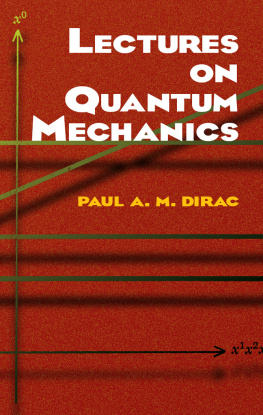Contents
Guide
Pages

Quantum Atom Optics
The rapid development of quantum technologies has driven a revolution in related research areas such as quantum computation and communication, and quantum materials. The first prototypes of functional quantum devices are beginning to appear. One of the leading platforms to realize such devices are neutral atoms, which allow for the observation of sensitive quantum effects, and have important applications in quantum simulation and matter wave interferometry. This modern text offers a self-contained introduction to the fundamentals of quantum atom optics and atomic many-body matter wave systems. Assuming a familiarity with undergraduate quantum mechanics, this book will be accessible for graduate students and early career researchers moving into this important new field. A detailed description of the underlying theory of quantum atom optics is given, before development of the key quantum technological applications, such as atom interferometry, quantum simulation, quantum metrology, and quantum computing.
Tim Byrnes is Assistant Professor in physics at New York University, Shanghai. He has previously held research positions at the National Institute of Informatics and the University of Tokyo in Japan, where his research has been focused on quantum information, particularly quantum simulation, exciton-polariton physics, and alternative models of quantum computation.
Ebubechukwu O. Ilo-Okeke obtained his PhD from Worcester Polytechnic Institute, USA. In 2017, he was appointed Research Fellow at New York University, Shanghai, where his research is focused on ultra-cold atomic gases, quantum atom optics, and quantum information.
Quantum Atom Optics
Theory and Applications to Quantum Technology
TIM BYRNES
New York University, Shanghai
EBUBECHUKWU O. ILO-OKEKE
New York University, Shanghai


University Printing House, Cambridge CB2 8BS, United Kingdom
One Liberty Plaza, 20th Floor, New York, NY 10006, USA
477 Williamstown Road, Port Melbourne, VIC 3207, Australia
314321, 3rd Floor, Plot 3, Splendor Forum, Jasola District Centre, New Delhi 110025, India
103 Penang Road, #0506/07, Visioncrest Commercial, Singapore 238467
Cambridge University Press is part of the University of Cambridge.
It furthers the University's mission by disseminating knowledge in the pursuit of education, learning, and research at the highest international levels of excellence.
www.cambridge.org
Information on this title: www.cambridge.org/9781108838597
DOI: 10.1017/9781108975353
Cambridge University Press 2021
This publication is in copyright. Subject to statutory exception and to the provisions of relevant collective licensing agreements, no reproduction of any part may take place without the written permission of Cambridge University Press.
First published 2021
A catalogue record for this publication is available from the British Library.
ISBN 978-1-108-83859-7 Hardback
Color figures for this publication at www.cambridge.org/quantumatomoptics .
Cambridge University Press has no responsibility for the persistence or accuracy of URLs for external or third-party internet websites referred to in this publication and does not guarantee that any content on such websites is, or will remain, accurate or appropriate.
To our parents, loved ones, children, friends, the colleagues who encouraged and supported us, and the visionaries who dared to pursue their curiosity
Foreword
Having never written a book foreword beforeward, I did the logical thing and Googled How to write a book foreword. I found the following information: 1. Be honest. 2. Use your unique voice. 3. Discuss your connection to the story and authors. 4. Mimic the style of the book. 5. Sign off. From these tidbits of insight, it sounds more like I am conducting an hour-long radio show and not writing a foreword for a book. Nevertheless, I shall endeavor to address each point in turn.
1. Be honest:When my friends and colleagues Tim Byrnes and Ebubechukwu Ilo-Okeke asked me to write the foreword to











